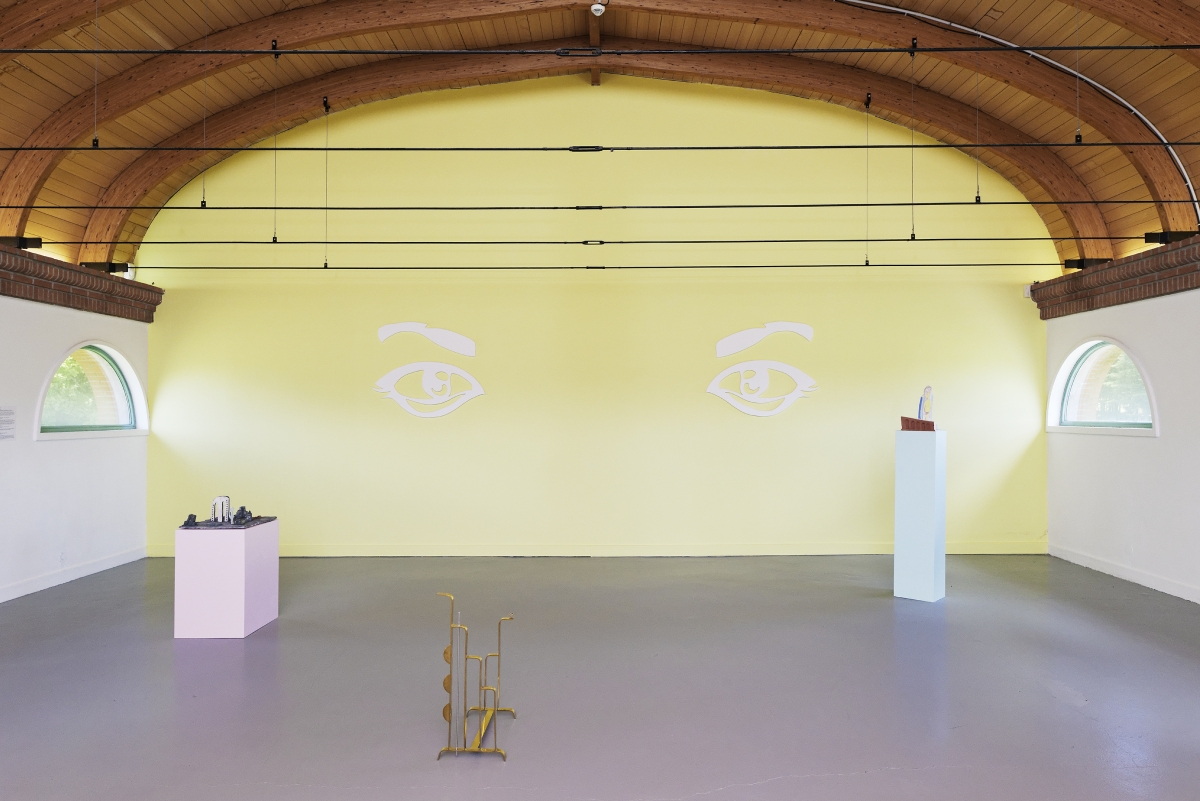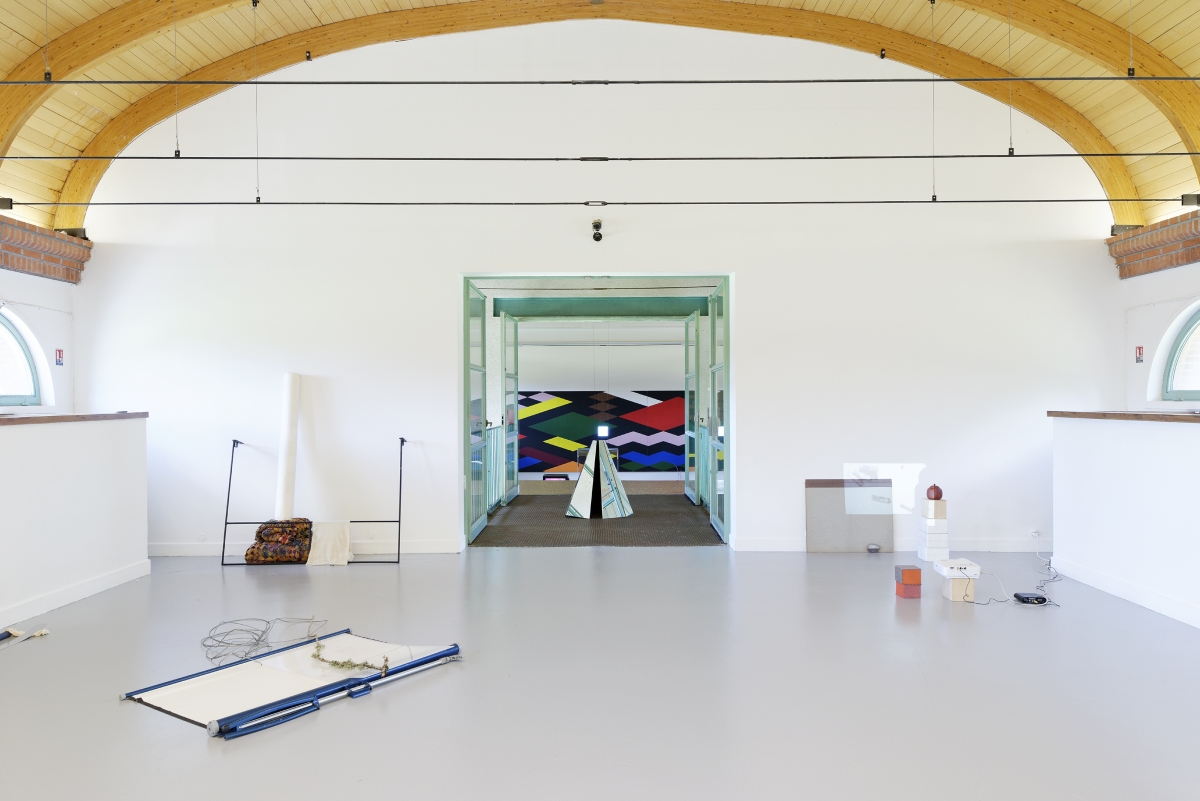The Ghost Builder.
Let’s just say that it’s a kind of enclosed open-air space. The body stretches out on a lawn. Here and there, each of our protagonists holds long metal instruments in their hands. Some make incisions in their friends’ skin, to remove the insects that have insidiously slipped between the epidermis and the dermis.
Parasiting a territory, transforming its properties, offering it a new fiction. A lake. In the middle: an island forms, an island is built. Expropriating, destroying, bringing in water – this is the time of electric life. The limitless expanse as far as the eye can see, overlooks hectares of wilderness.
They move on, still carrying the metal object, all of them unaware that this landscape was only created out of human desire, out of the history of industrialisation.
At some point, it had to be attributed a history, given an invented heritage.
Suspended between them, the island and themselves. Further south, after the fall of the totalitarian regime, in Rome, in Milan, they got together to found the tendenza with the aim of creating an architecture that would play on the stylistic contributions from each century. Assembling as though for a collage and reactivating a collective memory. When it builds, The Ghost Builder wants us to replay something already experienced, to bring out a memory slumbering inside us, the one that only our cells can recognise through a reaction to a colour, a form, a texture. Here, it is imposed, the landscape changes: a cruise ship, a lighthouse, playing on the absurdity of the man who wanted trucare his world until the last.
With their blades in hand, they advance, grouped together, treading on grass, then gravel, then concrete. Facing them, like an injunction in capital letters, is written: FORGET ARCHITECTURE.
Push the door. And immediately, Lo spacio tra di noi, the space between us. Small islands form, stemming one from the other, stiff, angular, and geometric. The colours are soft, they seem light but they are rough, the meticulous organisation of the objects emitting an almost human warmth. There is a palpable desire to become microscopic, to go to live amid these forms, to live a pocket-sized life.
Perhaps they might change format, perhaps, rather than watching from outside, it would be possible to go to live inside, to become oneself the parasite of the work, to feel by way of porosity.
Passing through the screen, glimpsing one another through smoked window panes, with our movements setting the blocks of colour dancing, becoming a third level of the work.
WOW. There is a certain pleasure in positioning oneself as an invisible voyeur in the middle of the exhibition, very high up, stuck to the wall, observing a number of scenes disseminated in the space: a square, arcades, groups forming to wait and share the ennui of a scorching afternoon together. Further on, only the gaze can give an existence to the gesture, the filmed movements are the only witnesses of a furtive construction.
We are reminded of the outside, through gestures that evoke transition: shoes, shoetrees that are frozen or caught in wax.
Multiple layers of sand of different colours and textures, recalling the strata of construction, the trace of initiatory rites? The sole indication of their location would be their various natures. The displacement, the erosion of time continues to be felt in a big sheet as though faded by the sun from yellow to green, animal and mineral matter is combined with small plastic balls, symbolic of a modern material, each day spewed forth by our waters. One by one, they get on all fours, as though to admire the shifting material. They think of the movements of the water, the currents that, in their flotsam, shape and absorb like a giant intestine.
They are obsessed with the potential invasion of one body by another. Unlike what they thought when they arrived here, the insularity does not allow for withdrawal, it requires extreme attention, a constant state of standby. The island is cannibalistic; it needs to eat them to construct its history. They say that the metal object may not always protect them. Aglaé, the least afraid of them all, gets up and tries to lead the others towards the exterior with her. Like the movement that would mark the acceptance of a shift in nature; everyone stands up, they throw their instrument into a large basin, one after the other. Together, they enter the vertiginous danger zone of metamorphosis.
«Oublier l'architecture : 25 ans d'architecture à Vassivière»
Centre International d’Art et du Paysage de Vassivière
26 june > 6 november 2016
















